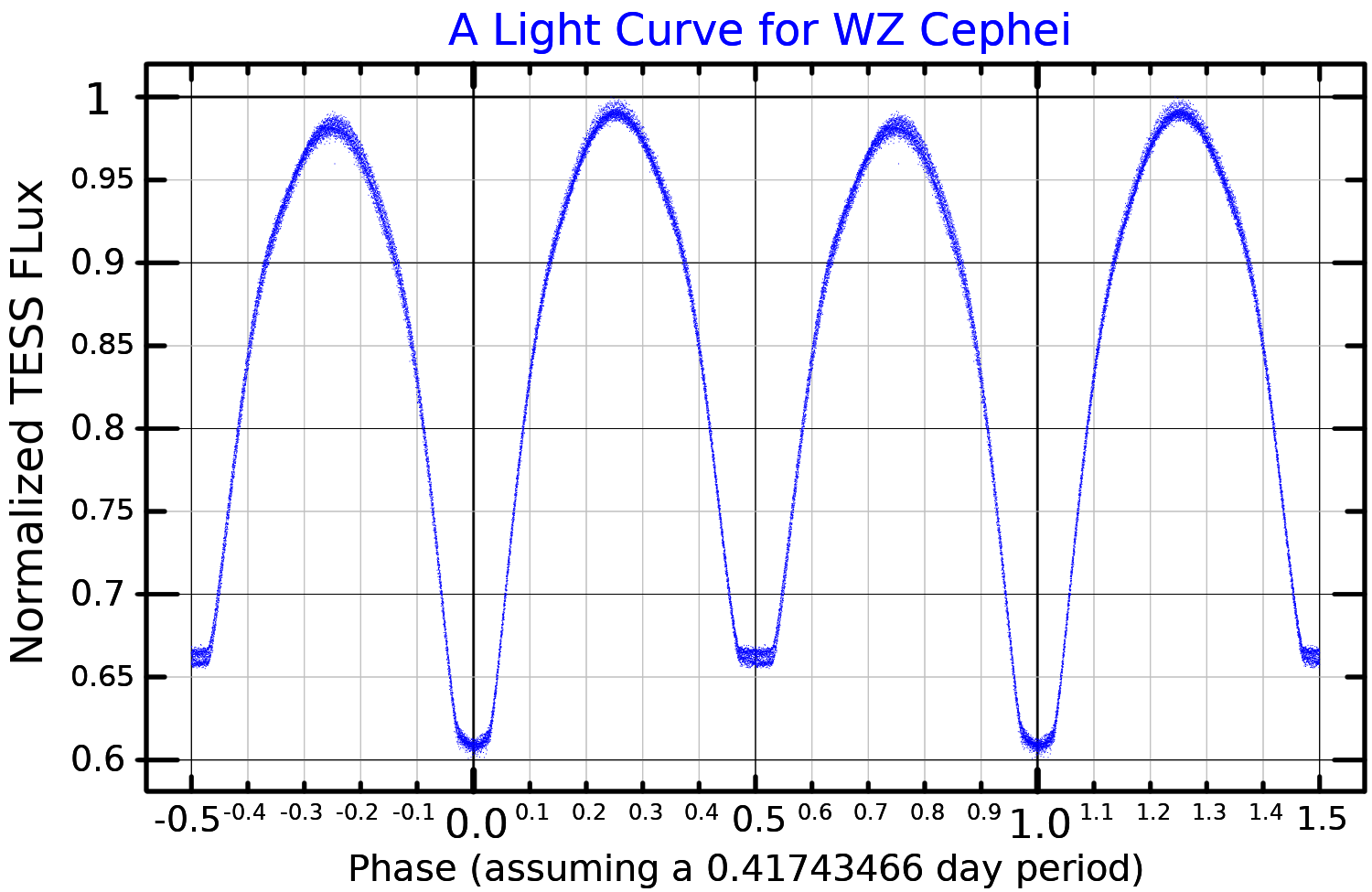WZ Cephei on:
[Wikipedia]
[Google]
[Amazon]
WZ Cephei is an  Heribert Schneller announced the discovery that the star is a
Heribert Schneller announced the discovery that the star is a
eclipsing binary
A binary star or binary star system is a Star system, system of two stars that are gravity, gravitationally bound to and in orbit around each other. Binary stars in the night sky that are seen as a single object to the naked eye are often resolved ...
star of W Ursae Majoris
W Ursae Majoris (W UMa) is the variable star designation for a binary star system in the northern constellation of Ursa Major. It has an apparent visual magnitude of about 7.9, which is too faint to be seen with the naked eye. However, i ...
-type in the constellation of Cepheus, located 880 light year
A light-year, alternatively spelled light year (ly or lyr), is a unit of length used to express astronomical distance, astronomical distances and is equal to exactly , which is approximately 9.46 trillion km or 5.88 trillion mi. As defined by t ...
s away from the Sun
The Sun is the star at the centre of the Solar System. It is a massive, nearly perfect sphere of hot plasma, heated to incandescence by nuclear fusion reactions in its core, radiating the energy from its surface mainly as visible light a ...
. The stars orbit around a common orbital barycenter
In astronomy, the barycenter (or barycentre; ) is the center of mass of two or more bodies that orbit one another and is the point about which the bodies orbit. A barycenter is a dynamical point, not a physical object. It is an important con ...
every 0.41744 days (slightly over 10 hours). Timing analyses have revealed the possible presence of a third low-mass stellar companion in a wide orbit.
 Heribert Schneller announced the discovery that the star is a
Heribert Schneller announced the discovery that the star is a variable star
A variable star is a star whose brightness as seen from Earth (its apparent magnitude) changes systematically with time. This variation may be caused by a change in emitted light or by something partly blocking the light, so variable stars are ...
, in 1928.
Presence of a third body
According to Zhu & Qian (2009) a third low-mass object of stellar nature could be responsible of orbital period variations observed for WZ Cep with a periodicity of roughly 32 years. Such a companion would yield a minimum mass of 0.17Solar masses
The solar mass () is a frequently used unit of mass in astronomy, equal to approximately . It is approximately equal to the mass of the Sun. It is often used to indicate the masses of other stars, as well as stellar clusters, nebulae, galaxies ...
and be located 26.6 Astronomical Unit
The astronomical unit (symbol: au or AU) is a unit of length defined to be exactly equal to . Historically, the astronomical unit was conceived as the average Earth-Sun distance (the average of Earth's aphelion and perihelion), before its m ...
s (nearly the same orbital separation of Neptune
Neptune is the eighth and farthest known planet from the Sun. It is the List of Solar System objects by size, fourth-largest planet in the Solar System by diameter, the third-most-massive planet, and the densest giant planet. It is 17 t ...
in Solar System
The Solar SystemCapitalization of the name varies. The International Astronomical Union, the authoritative body regarding astronomical nomenclature, specifies capitalizing the names of all individual astronomical objects but uses mixed "Sola ...
) from the eclipsing binary. The star could likely turn out a Proxima Centauri
Proxima Centauri is the nearest star to Earth after the Sun, located 4.25 light-years away in the southern constellation of Centaurus. This object was discovered in 1915 by Robert T. A. Innes, Robert Innes. It is a small, low-mass st ...
-analog, with inferred luminosity 3.7 percent that of Sun and 20 percent of its radius, according to mass-radius relationship.
References
Cepheus (constellation) Cephei, WZ W Ursae Majoris variables F-type main-sequence stars {{Multi-star-stub